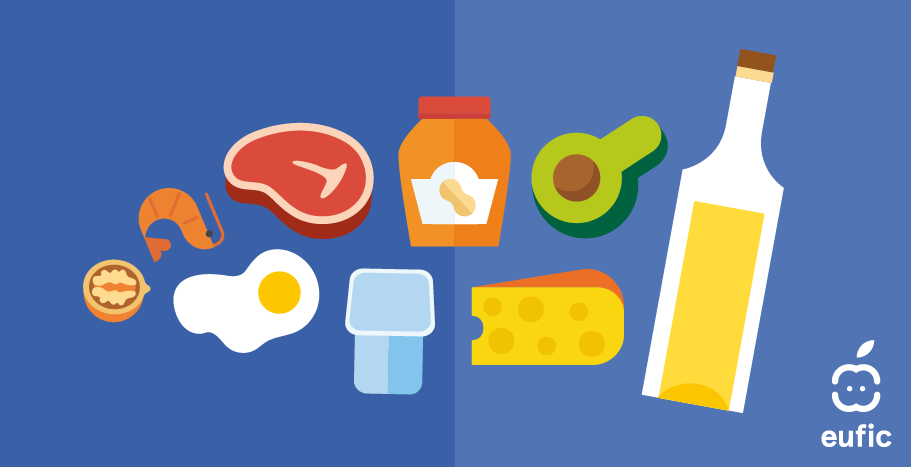How effective is the ketogenic diet?
Last Updated : 10 August 2018
Carbs make you fat, right? This common misconception comes from the claim that carbohydrates are bad for us because they are broken down into glucose, triggering the release of insulin, which helps the body store any excess energy as fat. However, it’s not only carbohydrates that stimulate insulin secretion, protein- and fat-rich foods do this too.1 In fact, too much energy from any nutritional source will lead to weight gain.
There have been many versions of the low-carb, high-fat (LCHF) diet over the years, e.g. Atkins, Dukan and, most recently, the ketogenic diet, but they all have the same consumption patterns: very low-carb intake (about 20-50 g per day), high fat and moderate protein intake.2 The diets typically involve the exclusion of grains, legumes, dairy, refined sugar, most fruits and starchy vegetables.3 Carbohydrates in these diets are mainly from non-starchy vegetables, nuts, and seeds. LCHF advocates claim that the diet can help with weight loss, hunger control and overall health. Some also claim that LCHF diets can be used to treat cancer.
What does the science say?
Research shows that with careful planning, a LCHF diet can be an effective treatment for people with epilepsy and can help manage type 2 diabetes.4,5 There is also some evidence that very low-carb diets can result in greater weight loss for individuals with obesity compared to low-fat diets6. However, any weight loss that occurs is most likely to be as a result of a calorie deficit created from cutting out the energy-dense foods and sticking to extremely low-carb diets may not be a practical and sustainable long-term option for many people. Moreover, many carbohydrate containing foods, such as fruit, vegetables and whole grains, contain components important for health like vitamins, minerals and dietary fibre.7
Although use of the ketogenic diet (LCHF) in cancer treatment has shown some promising results in animal studies, more research is needed to better explain the effects.8 The limited number of studies and differences in study design and characteristics, resulting in poor quality evidence, make it hard to draw any firm, evidence-based conclusions.8
How do carbs fit into a healthy diet?
Carbohydrates are a macronutrient found in most foods and they form an important part of our diets. They are converted to glucose, which the body uses as a source of energy to maintain muscle and organ function.7 The various types of carbohydrates differ in terms of chemical makeup, digestion rate, and absorption:9
- Simple carbohydrates are made up of one or two sugar molecules and are digested and absorbed quickly by our bodies. Added sugars and the sugars found in fruit and milk are examples of simple carbohydrates.
- Complex/starchy carbohydrates, made up of a long chain of sugars, take longer to digest. Examples of complex carbohydrates include potatoes, pulses, and whole grains e.g. brown rice, barley, and oats.
- Dietary fibre is a plant-based carbohydrate, which differs from starchy and simple carbohydrates, because it is not digested in the small intestine and, instead, reaches the large intestine. Fibre helps to keep our digestive system healthy and prevent constipation.
Fibre-rich foods, such as fruit and vegetables, wholemeal bread /pasta, nuts and seeds,10 may help with weight maintenance as they can give a feeling of fullness and satiety.1
The European Food Safety Authority (EFSA) recommends a carbohydrate intake of 45-60% of total energy intake for both adults and children,12 and the World Health Organization (WHO) recommends that less than 10% should come from free sugars.13 Eating a variety of carbohydrate foods ensures that we get the maximum nutritional benefit.12
Research shows that eliminating food groups unnecessarily from the diet can lead to nutrient deficiencies, and create a negative relationship with food, which in extreme cases can lead to eating disorders.10 It’s important to remember that balance, variety and portion control are key.
References
- Holt, SH, et al. (1997) An insulin index of foods: the insulin demand generated by 1000-kJ portions of common foods. The American Journal of Clinical Nutrition, 66(5), 1264-76.
- Pediatrics. 2007 Mar;119(3):535-43. The ketogenic diet: one decade later. Freeman JM1, Kossoff EH, Hartman AL.
- Thom, G. & Lean, M. (2017) Is There an Optimal Diet for Weight Management and Metabolic Health? Gastroenterology, 152(7), 1739-1751.
- Neal, E.G., et al. (2008) The ketogenic diet for the treatment of childhood epilepsy: a randomised controlled trial. The Lancet Neurology, 7(6), 500-506.
- Westman, E.C, et al. (2008) The effect of a low-carbohydrate, ketogenic diet versus a low-glycemic index diet on glycemic control in type 2 diabetes mellitus. Nutrition & Metabolism, 5(36).
- Bueno NB, et al. (2013) Very-low-carbohydrate ketogenic diet v. low-fat diet for long-term weight loss: a meta-analysis of randomised controlled trials. British Journal of Nutrition, 110(7): 1178-87.
- EUFIC (2012) Carbohydrates
- Oliveira, C, et al. (2018) A Nutritional Perspective of Ketogenic Diet in Cancer: A Narrative Review. Journal of the Academy of Nutrition and Dietetics, 118(4), 668-688.
- Lunn, J. & Buttriss, J.L. (2007) Carbohydrates and dietary fibre. Nutrition Bulletin, 32, 21-64.
- British Nutrition Foundation (BNF, 2018) Dietary Fibre
- EUFIC (2014) Q&A on Whole grains
- European Food Safety Authority (2017) Dietary Reference Values for carbohydrates and dietary fibre.
- The World Health Organisation (WHO, 2015) Sugars intake for adults and children
- Nevin, S.M & Vartanian, L.R. (2017) The stigma of clean dieting and orthorexia nervosa. Journal of Eating Disorders, 5(37).